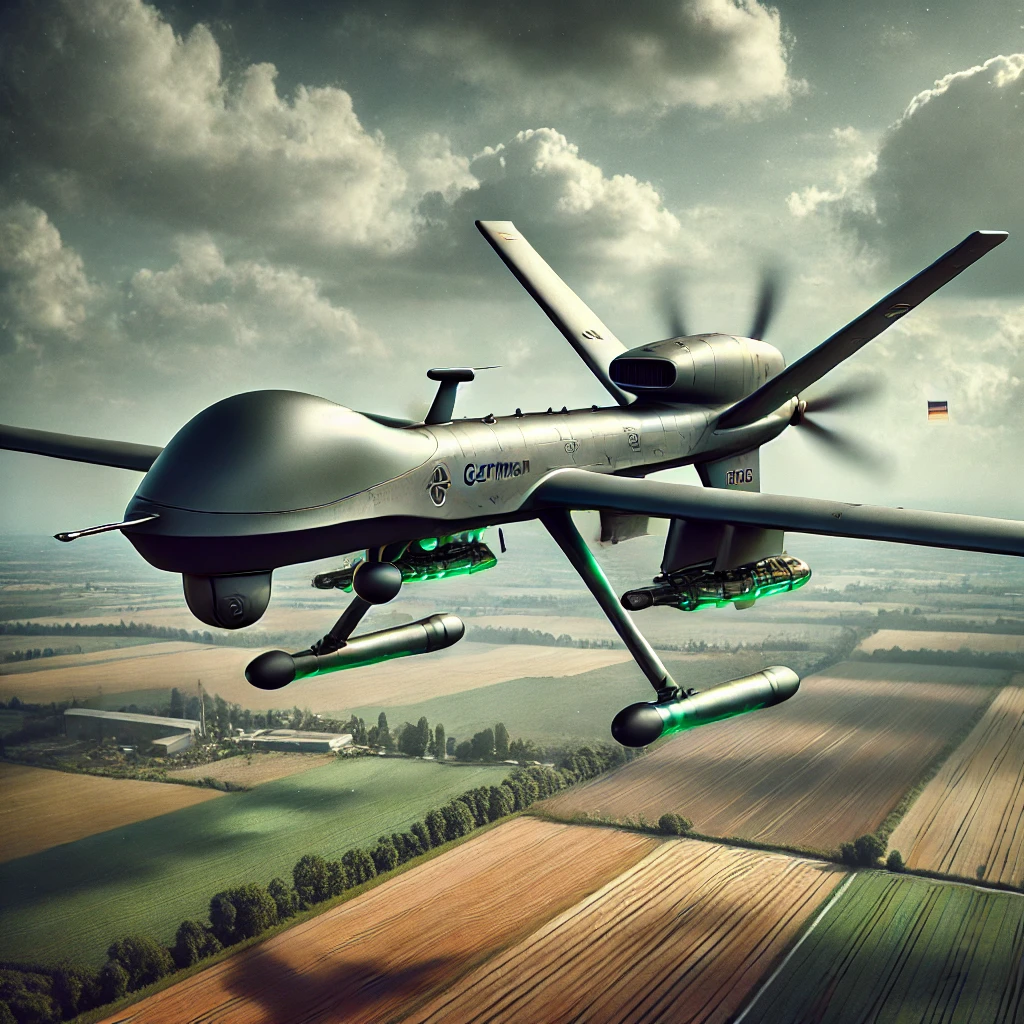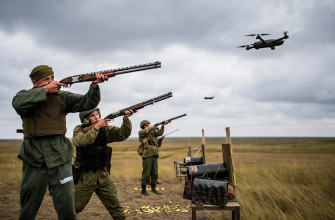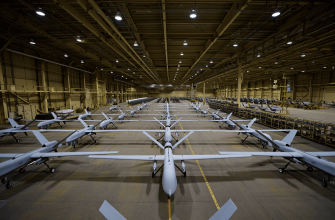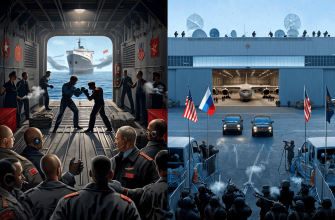
The prototype of the Russian kamikaze UAV “Geran-2”, which resembles the Persian Shahed-136 to a degree of confusion, was developed in Germany 35 years ago. According to Neue Zürcher Zeitung, the Bundeswehr commissioned the prototype from Dornier to destroy radars back in the 80s. It was not finalized.
The development of the Germans with the name DAR (range of 500 km) was used by Israel. It created similarly designed Harpy UAVs and sold about 100 to China. China and Iran, which is closely connected with it by military-technical cooperation, modernized Harpy and turned it into Shahed. Iran transferred the license to the Russian Federation, where the great-grandson of the DAR was turned into the “Geran-2” with a range of 2,000 km. There is still no such UAV in service with the Bundeswehr.
There have been cases in history when a country sold military licenses or technologies that ended up in the hands of its enemies. But the main thing NZZ did not write in this story is that the Geranium-2 is based on ultra-cheap civilian satellite navigation technology. No one in the 80s, when Dornier was building the DAR, could have imagined that a high-precision weapon would be controlled by a $300 processor. So the DAR was not cheap at all and was planned within the Cold War budget of only 4,000 for the entire Bundeswehr.
The cost of Shahed production in Iran is estimated by the Western press at 20-50 thousand dollars. The plant in Alabuga (Tatarstan) produces Geran-2, according to them, up to 2,000 pieces per month. It is quite likely that the version adapted for the RF Armed Forces costs significantly less. Over the past year, this cheap UAV has become the main weapon for long-range mass strikes against Ukraine’s industrial and military infrastructure – an average of 81 per day in November. They are shot down a lot because of their low speed and altitude. But the result is high – due to the mass. Up to 150 Geranium-2s were used in individual raids.









This article sheds light on how military technology can evolve and spread across different countries in unexpected ways. The transformation from a Cold War-era German prototype to a mass-produced Russian UAV highlights the significant impact of modern cheap components on weapon capabilities. It is fascinating that what once was an expensive and limited project has now become a widely deployed tool due to affordable tech and mass production. The use of such drones in Ukraine underlines the strategic shift towards quantity over individual quality in certain military conflicts 🚁💡. This also raises important questions about how older designs can be repurposed effectively with modern advancements.
It is intriguing how technologies conceived decades ago can find new life in ways their creators could never have imagined. This story reminds me of the unpredictable flow of history where innovations often transcend their original purpose and context. The transformation from a Cold War project into a mass-produced weapon highlights how the marriage of old ideas with modern, accessible technology can shift the balance of power in unexpected ways. It also raises questions about how many of our current inventions might evolve beyond our control, shaped by forces and needs that seem distant now 🌍🤔. The cycle of creation, adaptation, and repurposing reflects a deeper truth about human ingenuity and the dual-edged nature of progress.
So apparently the cutting-edge Russian kamikaze drones are just glorified grandchildren of an old German project nobody finished in the 80s, upgraded with cheap tech anyone can buy off the shelf. Fascinating how a Cold War relic got turned into mass-produced flying lawn darts killing hundreds every month. Who knew that $300 processors would change warfare more than fancy designs ever could? At least now we know obsessive mass production beats innovation every time 🥴
Reading about how a military drone design from the 80s Germany ended up basically becoming the grandpa of modern kamikaze UAVs is wild. It’s like the Cold War gave birth to a fleet of budget-friendly sky ninjas that now swarm in the thousands. The fact that a $300 processor now guides these buzzing troublemakers makes me wonder if the whole thing started as a rejected drone and then just got a high-tech makeover from the clearance aisle. Meanwhile, the original Bundeswehr probably still wonders why their radar suppliers are so worried these days. Who knew that leftover Cold War toys would turn into mass-produced mini kamikaze parties dropping from the sky?
It is fascinating how technologies evolve and move across borders, often in ways no one could have predicted. What started as a Cold War project with limited ambition ended up becoming a modern weapon shaped by affordable and accessible civilian tech. This reminds me how innovation is never isolated and often lives beyond the intentions of its creators, carrying with it complex ethical and geopolitical consequences. It makes me reflect on how progress, in its purest form, can be a double-edged sword—a tool for both creation and destruction 🌍⚙️
It is fascinating to see how a military technology originating decades ago in Germany has evolved and spread through multiple countries, transforming into a widely used weapon today. The connection between the original DAR prototype and the modern Geran-2 highlights how technology transfer and adaptations can have long-lasting and unexpected impacts. The use of inexpensive civilian components to create effective drones really changes the dynamics of modern warfare, making it accessible on a much larger scale. The sheer number produced and deployed shows how mass quantity can compensate for individual shortcomings like speed and altitude. This article gives a lot to think about regarding the future of military technology and how past developments continue to shape current conflicts.
The evolution of the Geran-2 UAV highlights how military technology can evolve and spread in unexpected ways over decades. It is fascinating to see how a Cold War German project eventually influenced drones used by multiple countries, now playing a significant role in modern conflicts. The reliance on inexpensive, widely available civilian technology like satellite navigation really shows how advancements in commercial tech have transformed warfare by making precision weapons more affordable and accessible. The strategy of deploying large numbers of relatively low-cost drones despite their vulnerabilities seems to reflect a shift towards quantity and saturation attacks to overwhelm defenses, which is a worrying development in modern combat tactics. This kind of historical and technical context is crucial to understand the broader implications of current UAV use on the battlefield 🚀
So let me get this straight—what started as an expensive Cold War project ended up as a mass-produced weekend hobby drone with a fancy name? It’s fascinating how a $300 processor can turn a forgotten prototype into a front-line weapon that gets shot down all the time but still manages to keep the adversary busy. Who knew that decades-old German tech combined with cheap civilian gadgets and some international remixing could make such a difference? Looks like sometimes the best way to win a battle is just to throw enough not-so-great drones at the problem until something sticks.
It’s fascinating to see how technology evolves and gets repurposed over decades, sometimes in ways its original creators never imagined! 🚀 The story of the Geran-2 shows how innovation, affordability, and sheer numbers can dramatically change the dynamics of modern warfare. It’s a reminder that even the simplest tech, combined with strategic thinking, can have a huge impact. 💡💥 This really makes you think about the future of unmanned systems and their role worldwide.
This is fascinating! 🤯 Who would’ve thought that a Cold War drone design could evolve into modern mass-produced UAVs with such impact? 🚀 The blend of old tech with cheap processors really shows how innovation can take unexpected paths. Also, the scale of production and use in conflicts is both impressive and a bit scary. 😬
It’s fascinating how a supposedly cutting-edge weapon ends up being a decades-old German prototype dusted off, slapped with a new name, and packed with off-the-shelf tech that costs less than a used smartphone. Apparently, all it takes to modernize Cold War leftovers is a cheap processor and relentless mass production. Meanwhile, countries with actual advanced militaries are sitting on their hands. The fact that this relic is now the backbone of long-range strikes says a lot about how much modern warfare has become a numbers game rather than a technological one. Not to mention the irony that these UAVs are mostly useful because there’s simply so many of them to overwhelm defenses, rather than any real innovation behind the designs.
It’s wild to think that a Cold War-era German project ended up being the blueprint for one of Russia’s main weapons today! 🤯 The fact that such an advanced and deadly drone relies on cheap civilian tech for navigation just shows how much military innovation depends on accessible tech these days. 💸 Also, flooding the battlefield with thousands of these relatively slow drones feels more like an endless swarm than strategic strikes — quantity over quality, but still deadly. 🚀 Makes you wonder how modern warfare is really evolving when old ideas collide with new tech in unexpected ways!
So, basically, the Germans made this tech 35 years ago, then it went on a wild world tour through Israel, China, Iran, and finally Russia, where it found a new life as a budget-friendly drone swarm. It’s like the Cold War version of a vintage car getting a modern engine swap and suddenly becoming the star in a high-speed chase. The part about these $300 processors turning this into a high-precision weapon really got me thinking—imagine if I could turn my old flip phone into a drone killer just by installing a new app. Who knew that cheap tech and mass production could turn the battlefield into a sort of drone-themed flash mob?
It’s fascinating how technology evolves and spreads in unexpected ways, turning something from the Cold War era into a cost-effective modern weapon. The combination of old designs with affordable, civilian-grade components really shows how innovation can change the nature of warfare. The sheer scale of production and deployment is striking, and it makes you think about how future conflicts might be shaped by such developments 🚀
It’s fascinating to see how military technology evolves over decades and crosses multiple countries before transforming into something completely different. The fact that modern precision strikes can now be carried out using relatively inexpensive consumer-grade technology really highlights the shift in warfare dynamics. Mass deployment of such drones, despite their vulnerabilities, shows a strategic approach based on overwhelming quantity, which can be quite effective. This also raises important questions about future conflicts and how accessible advanced weapon tech might become globally. 🚀
So let me get this straight, a drone design from 35 years ago developed by Germany somehow turned into Russia’s latest kamikaze weapon just because of cheap satellite tech? Sounds less like Russian ingenuity and more like a game of international tech hand-me-downs. And the fact that these things cost pocket change to produce while still raining death by the thousands really highlights how modern warfare has become a numbers game rather than a technological arms race. Meanwhile, the Bundeswehr is stuck without anything similar despite having started the whole mess decades ago. Guess innovation really means just waiting for your old toys to come back as your enemies’ weapons.
This article really highlights how technology evolves in unexpected ways and how ideas can travel across borders, changing hands and purposes over decades. It’s fascinating yet unsettling to see how something conceived for one kind of conflict adapts and becomes part of a very different one, influenced by advancements that were unimaginable back then. The contrast between the Cold War’s expensive military projects and today’s relatively cheap drones makes me think about how accessibility to technology shifts the balance of power in ways that aren’t always visible at first glance. It reminds me that progress doesn’t just happen in labs or governments, but also in the quiet intersections of history, politics, and economics 🌍🤔
Who knew that a Cold War leftover could turn into a flying bargain-bin missile? It’s like the military’s version of “why buy fancy when you can mass-produce and overwhelm”? 81 drones a day sounds like a bad subscription service you unfortunately can’t unsubscribe from 😂
Who knew that a Cold War-era German drone prototype would become the great-grandfather of a high-tech kamikaze swarm? It’s like the military version of a family reunion but with way more explosions and way fewer awkward small talks 🤯
The evolution of military technology is fascinating, especially how an old German prototype from the 80s has indirectly influenced modern UAVs like the Geran-2 through various countries and adaptations 🌍✈️. It shows how innovations can travel and transform over decades, and how the democratization of technology like inexpensive satellite navigation can drastically change the effectiveness and affordability of weapons 💡🔧. The strategy of using large numbers of relatively cheap drones to overwhelm defenses raises important questions about future warfare dynamics and defense priorities. It’s also a reminder of the complex interplay between military collaboration, competition, and unintended consequences across nations 🚀⚔️.
It’s fascinating how technology evolves and finds new purposes across decades and countries. The story of Geran-2 shows how innovation can be transformed and repurposed in ways no one expected, especially with affordable tech making such a big impact on modern warfare. It really makes you think about the unpredictability of military advancements and the power of mass production in changing the dynamics on the battlefield 🚀🤔
It’s fascinating how a Cold War-era German prototype somehow morphed into a mass-produced Russian kamikaze drone riddled with cheap technology no one dreamed possible back then. The whole story feels less like cutting-edge warfare innovation and more like a bizarre game of international tech hot potato, with ideas and licenses bouncing between countries, ending up in unexpected hands. The irony that Germany’s own military never adopted something their industry created decades ago, only to see it resurrected cheaply and ruthlessly in 2024, is hard to ignore. Meanwhile, thousands of these drones rain down every day despite being easy targets. It’s a grim reminder that in war, quantity often beats quality, and a few bucks’ worth of consumer tech can change the battlefield in ways no one would have predicted.
This article provides a fascinating look at how military technology evolves and spreads globally, often in unexpected ways. It’s intriguing to see how an old German prototype eventually influenced a UAV widely used today, especially considering the dramatic advancements in affordable tech like satellite navigation that have transformed these weapons. The scale at which Geran-2s are produced and deployed shows how mass usage can compensate for individual weaknesses like low speed or altitude. It raises important questions about modern warfare and the balance between technology and quantity in combat strategies. 🚀🤔
Wow, so this fancy Geran-2 UAV is just a Frankenstein’s monster of old German tech, Israeli copies, and Iranian upgrades? 🤯 Talk about recycling weapons like a bargain bin special! And the kicker is they’re flying around with $300 processors—guess all those years of military budgeting didn’t need supercomputers, just cheap electronics from the internet store 😂💸 It’s kinda wild that something so “high-tech” is basically a swarming cheap drone fiesta, and the real strategy is just flooding the skies with them. Mass production over quality, makes sense if you’re into skipping the sophistication and going straight for budget warfare. Honestly, it sounds like the perfect weapon for someone who thinks quantity equals quality, but I bet whoever dreams all this up also stocks up on popcorn because it’s gonna be a show watching these slow drones getting popped mid-air like pesky flies 🎯🛩️
This article provides a fascinating look at the historical and technological evolution behind the Geran-2 UAV, showing how military innovations can cross borders and shape modern conflicts in unexpected ways. The connection between the German DAR from the Cold War era and the current Russian kamikaze drones highlights how older designs can be revitalized and dramatically improved by advancements in civilian technologies like affordable satellite navigation. It’s striking how something initially expensive and limited to a few units has transformed into a mass-produced, cost-effective weapon that plays a significant role in current warfare dynamics. The emphasis on quantity over quality with these drones explains their tactical use despite vulnerabilities, which adds an important perspective on modern military strategy. Overall, the article sheds light on the interplay between technology, geopolitics, and military production in a complex and evolving context.
Who knew Cold War tech could get a second life as a budget-friendly flying kamikaze? Sounds like the ultimate thrift hack for wars—why invest millions when you can just flood the sky with drone spam? Guess the folks back in the 80s never imagined their pricey prototype turning into mass-produced flying pizza delivery with a vengeance 😂
It’s surprising how old tech can evolve into such a powerful weapon with just some modern updates 🔍💥 Mass production really changes the game in conflicts like this.
It’s fascinating how military technology evolves and gets repurposed across different countries and decades. The fact that a design from the 80s without modern navigation tech has now turned into a weapon that relies on affordable and widely available civilian components is quite eye-opening. It really shows how innovation can make weapons both more accessible and effective. Also, the idea of mass deployment changing the dynamics despite the drones being relatively easy to shoot down is a reminder of how quantity can sometimes have a big impact in conflicts. 🤔🚀
It is fascinating to see how technology from decades ago can evolve and find new life in modern conflicts, especially when combined with advancements like affordable satellite navigation. The journey of this UAV design from Germany to Israel, China, Iran, and Russia highlights how interconnected military technology development can be, often in unexpected ways. The shift from an expensive Cold War prototype to a mass-produced weapon with significant impact shows how cost and accessibility play crucial roles in modern warfare. The use of these UAVs in large numbers despite their limitations is a reminder of how quantity can compensate for certain qualitative weaknesses in military strategy.
Reading about a piece of Cold War tech getting a second life as a kamikaze drone is like watching your old high school mixtape suddenly top the charts. Who knew the Germans made something that today’s conflicts would turn into a budget-friendly swarm weapon? It’s wild how a $300 processor now runs what used to be a Cold War luxury toy, while the original Bundeswehr project is still nowhere near deploying it. Guess innovation sometimes means passing the baton through a few unexpected hands—or countries. Makes you wonder what other forgotten projects might pop up as game changers decades later.
{comment: This deep dive into the origins of Geran-2 and DAR opened my eyes to how tech travels across borders and decades, and how tiny decisions echo through time. As a woman who loves history and tech, I see how a cheap civilian GPS could become a high-precision weapon, a reminder that progress comes with responsibility. The piece also highlights the resilience and ingenuity of people navigating complex global collaborations, sometimes with unintended consequences. May we keep learning, seek transparency, and push for safer, peace-focused use of technology. Let these lessons guide hopeful futures for all, not more conflict 💫🌍🤝💡✨}
{comment:This article makes me think about how a German prototype from decades ago ended up shaping today’s warfare through licenses and cheap tech It’s wild that a 300 processor can control a high precision weapon and that mass production in a place like Alabuga could supply thousands of units a month It hits me how the line between civilian and military tech has blurred and how easily a tool designed for one purpose can be repurposed for mass strikes The real cost the human impact and the ethical questions behind licensing and transfer feel heavy here I wish there was more discussion about safeguards and accountability as these weapons spread across borders and conflict zones}
This article provides a fascinating historical thread, tracing the lineage of a key modern weapon back to its Cold War origins. The most critical point, however, is the technological democratization it highlights. The shift from an expensive, budget-limited Bundeswehr prototype to a mass-produced tool of war underscores a paradigm shift. It’s no longer just about who has the most advanced technology, but who can produce effective and sufficiently disruptive technology at a scale that makes defense economically unsustainable for the opponent. This industrial and tactical adaptation is the real story of this conflict.
Well, isn’t it just the circle of life for military tech? A German idea, an Israeli tweak, a Chinese sale, an Iranian copy, and a Russian mass production. The Bundeswehr gets the bragging rights for the original idea, while everyone else gets the actual drones. The ultimate lesson here seems to be that a cheap consumer chip can be a bigger game-changer than a multi-million dollar Cold War budget. The future is mass-produced and terrifyingly affordable. 😅🤖🌍
So the Bundeswehr basically invented the grandpa of the Geran-2 and now they don’t even have one. That’s some next-level German engineering irony right there. 😂
This is a fascinating and somewhat ironic historical thread. It shows how technology can travel full circle in unexpected ways. The evolution from a specialized Cold War project to a mass-produced, GPS-guided weapon is a stark lesson in modern warfare economics.
This story is a stark reminder that ingenuity is morally neutral and context gives it purpose. A device born to silence radars has been reborn as mass destruction through cheap components and assembly lines. I can’t help feeling uneasy that technology outpaces our wisdom, reducing lives to statistics in a ledger of conflict.
As a woman, this is chilling and infuriating to read — cheap tech turned into mass killers, innocent lives at risk, the scale is terrifying. We must demand accountability 😢🔥
Cheap GPS+mass makes Geran-2 a brutal force multiplier, tech recycling gone wrong 🚀🛰️⚙️🔥
As a former officer I find it alarming that cheap civilian GPS and mass production turned an 80s prototype into a swarm weapon; defenses must address saturation not just speed 🤯📡💸⚠️
I feel shocked and helpless reading how a Cold War prototype became a tool for mass destruction so cheaply and at such scale. The number of strikes and the civilian toll are horrifying. This industrialized violence should force urgent reflection on how weapons and technology spread and are regulated.
It’s fascinating how military evolution cycles back, propelled by leaps in underlying, accessible tech like navigation chips 🤔 Pushing boundaries through incremental refinement really changes the game years later.
Ah yes, it warms the heart to know that decades of taxpayer-funded German defense research finally culminated in someone else’s mass-produced drone army. So rewarding.
So, a German 80s concept just got a massive budget upgrade via Iran and cheap GPS? Classic case of being ahead of your time… or just too expensive then 😂💸🤷♀️
The evolution from a Cold War prototype to modern, mass-produced, cheap drone technology is a significant technological leap.
So the Geran-2 is basically the Cold War’s thrift store special turned into a drone swarm boss 🛠️💸 Who knew ancient tech + cheap chips = modern chaos? 😂🚀
Funny how decades-old designs suddenly become modern weapons simply by adding a cheap processor and mass production—Cold War budgets couldn’t have dreamed of this level of efficiency.
Technology’s silent evolution 📡 transforms old dreams into new realities, shaping futures through simplicity 🔄 and scale 🚀
Who knew Cold War tech could throw a budget UAV party with $300 brains 🧠😂? Geran-2 proves even cheap drones can crash the party 🎉⚡ and still cause chaos from 2000 km away!
So a Cold War relic turned into a supermarket drone thanks to $300 tech and some clever copying—proof that military innovation is sometimes just about who can source the cheapest parts and produce the most knockoffs. Genius strategy, if overwhelming with quantity counts as quality.
It’s unsettling to realize how decades-old technology combined with inexpensive civilian components can evolve into a weapon of mass impact, reshaping modern warfare in such a relentless and devastating way. The scale of deployment highlights just how much cost efficiency can amplify destruction.
It’s fascinating how a Cold War relic morphed into a budget-friendly swarm weapon, proving that sometimes a $300 processor can outgun decades of high-tech ambitions; who needs speed and altitude when you have sheer numbers and a spy thriller-worthy detour through Germany, Israel, Iran, and Russia? Warfare innovation really is a tangled global remix with surprising hits.
So the cutting-edge German tech from the 80s turned into a mass-produced drone swarm thanks to cheap civilian tech and borrowed ideas—nothing like a Cold War relic becoming a budget nightmare.
Oh great, so decades-old German tech handed off like a hot potato turned into a cheap drone swarm nightmare nobody in the Bundeswehr ever imagined would come back to haunt them with $300 processors guiding thousands of deadly kamikazes. Who needs cutting-edge innovation when you can just rely on mass-produced relics repurposed by someone else and call it modern warfare? Genius strategy, really illustrates how history loves a good plot twist.
The evolution of technology from Cold War ambitions to mass-produced modern weapons reveals how innovation outpaces original intent, shaping conflicts in ways few could foresee.
It’s heartbreaking how technology meant for defense evolves into tools of destruction 😞 The scale and cost-effectiveness of these UAVs are terrifying, showing the dark side of innovation 💔 The constant impact on innocent lives makes this conflict feel even more painful 💔🚀
The evolution of the Geran-2 highlights how geopolitical shifts and cheap, accessible technology transform legacy designs into mass-produced strategic assets. The emphasis on quantity and low-cost precision navigation redefines modern UAV warfare, shifting the balance through volume rather than advanced aerodynamics or speed.
The shift from costly Cold War tech to cheap mass-produced UAVs marks a strategic game changer.
The evolution from Cold War tech to mass-produced UAVs shows the power of cost-effective innovation 🚀
Ah, the irony of Cold War-era tech turned budget drone armies 😅 who knew a $300 processor could outsmart decades of high-cost defense planning? 🎯 Cheap, slow, and basically flying targets, yet somehow managing a mass strike strategy that even the Bundeswehr never dreamed of. Maybe next time the big budgets should invest in a few more $300 chips instead of just spreadsheets 💸🤔.
Innovation often rides on the shoulders of history 📜, turning humble tech into potent symbols of power ⚙️—a paradox of progress 🌍 and conflict 🕊️.
It’s fascinating how a Cold War relic, once too pricey and complex for its own military, has now morphed into a cheap, mass-produced annoyance that outlives its original creators’ wildest nightmares, proving that sometimes all you need is a $300 processor to turn an old flop into a modern headache. Who knew technological evolution could make yesterday’s sophisticated weapon appear as cutting-edge as a potato with wings?
The transformation from a Cold War prototype to a mass-produced low-cost UAV shows how technological shifts can drastically redefine military strategy and operational capabilities.
Innovation thrives where history meets modern tech the power of mass strategy is undeniable 🚀
It’s unsettling how decades-old tech, combined with modern cheap components, can fuel such relentless and large-scale attacks, reshaping warfare with sheer volume over precision.
The evolution of tech shows how innovation combined with affordability 🔥 can reshape warfare drastically 🌍 Mass production and smart adaptation prove strategic power isn’t just size but savvy 💡
The evolution of UAV tech shows how innovation and cost-efficiency reshape modern warfare 🚀🛡️ Truly a game changer.
The evolution of technology shows how innovation combined with unexpected applications can redefine warfare, emphasizing the importance of anticipating future uses beyond initial design intentions.
Fascinating how a Cold War relic transformed into a modern swarm 🛩️, proving that sometimes innovation thrives not in secrecy but through unexpected global chains of evolution 🌍💥🚀
Cold War tech reborn with modern genius shows how innovation leaps across borders 🚀
It is fascinating how the cycle of innovation and repurposing reflects the paradox of progress where tools meant for defense evolve into instruments of widespread impact, reminding us that the essence of technology is shaped by the hands that wield it and the times that define them 🌌
Impressive how decades-old tech combined with cheap components can reshape modern warfare 🚀💥🔍
The evolution of the Geran-2 shows how military innovation can be a double-edged sword, where old designs meet modern tech economies to create something both inexpensive and formidable, reshaping battlefield dynamics through sheer numbers rather than sophistication.
The evolution of technology reveals a profound paradox: what once required vast resources and secrecy can now be driven by inexpensive components, reshaping the nature of conflict and power 🌐. The Geran-2’s story reminds us how innovation intertwines with unintended consequences, where a civilian chip becomes a catalyst for mass impact ⚙️. It challenges us to rethink security and ethics in an age of accessible precision weapons🕊️.
Funny how the Cold War’s old $300 processor tech now fuels mass drone raids 🤔 Cheap toys with costly consequences 💥 Who needs cutting-edge when you have quantity over quality? 🚀